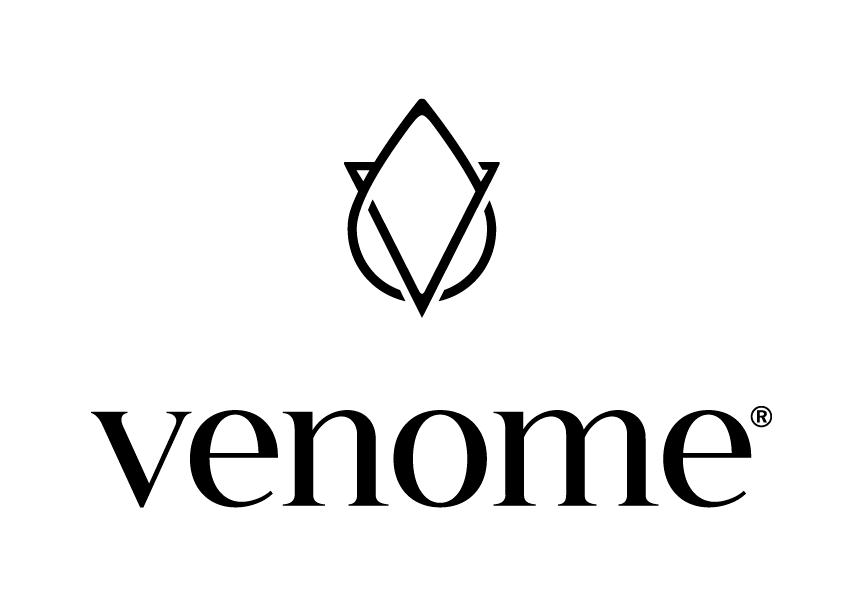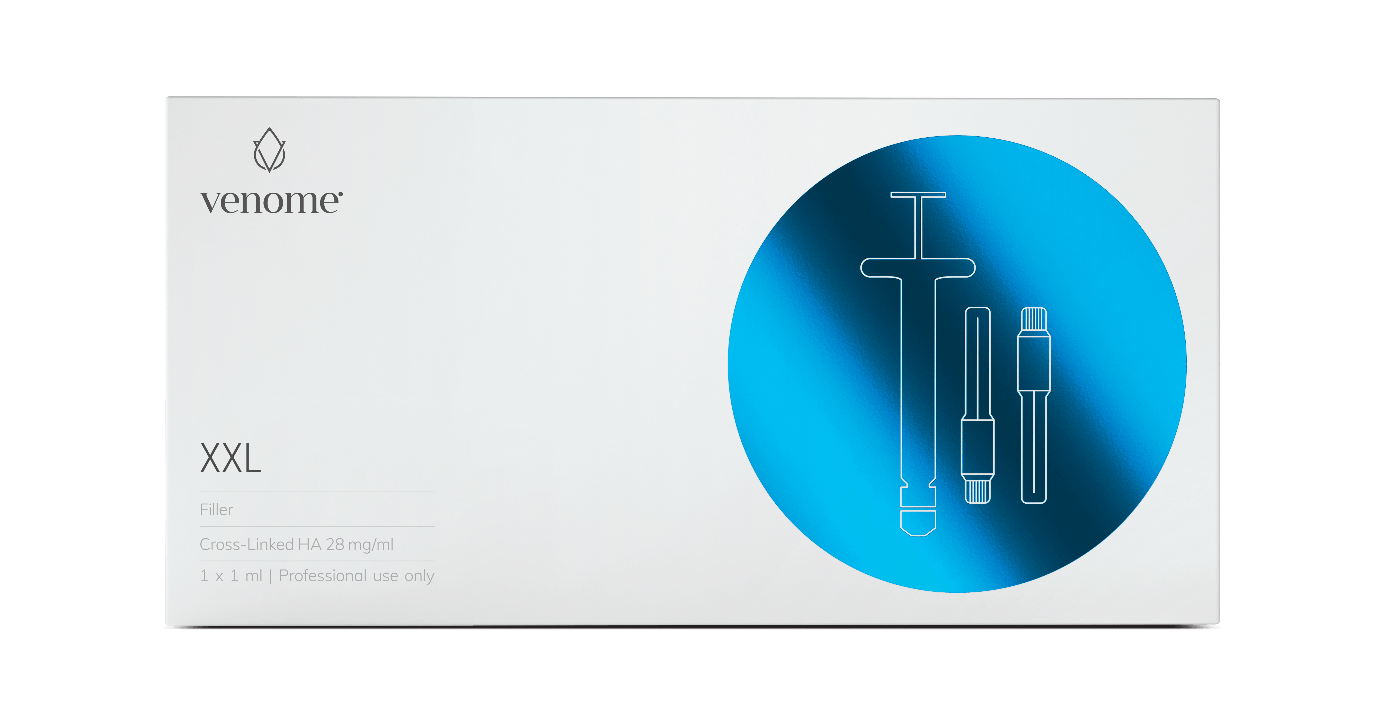FILLER XXL
Thanks to its appropriate plasticity and unique rheological properties, the cross-linked hyaluronic acid gel Venome Filler XXL is ideal for modeling facial shapes and correcting significant tissue defects and scars. The preparation in the form of a homogeneous and homogeneous gel gives the appropriate volume and firmness with a high degree of cohesiveness and softness of the correction. Thanks to its appropriately elastic structure and the acid formula hydration technology used, the filler effectively corrects deep defects, reducing the risk of asymmetry and the size of post-treatment swelling.
The effect lasts between 8 and 10 months, though this depends on the injection technique, as well as a number of biological and environmental factors.
Professional use only.
The product contains 28mg/ml of monophasic, cross-linked hyaluronic acid in the form of viscoelastic gel.
Venome Filler is contraindicated in case of:
- allergy to hyaluronic acid;
- auto-immune disease or during immunotherapy;
- acute skin infection in the area to be treated (e.g. acne);
- acute influenza and feverish cold;
- acute systemic infection (herpes, psoriasis);
- coagulation disorder;
- a tendency to form scars;
- pregnancy or breast-feeding;
- people under age of 18;
Venome Filler must not be injected into:
- blood vessels
- joints
- breasts
Not recommended for treatment of orbita and front head lines:
Side effects:
mmediately after treatment, injection related reactions like redness and swelling and in rare cases itching or bruising may be observed at the injection site(s). The day after a pronounced swelling may occur but this will resolve spontaneously within 3-5 days. Allergic reactions are extremely rare, because Venome Filler is protein free due to the non-animal source. Rarely, formation of nodules or oedema may occur at the injection site. In case of an inflammatory reaction it is recommended that the patient visits the physician.
In the literature for filler materials based on hyaluronic acid, individual cases of granuloma, abscesses, delayed hypersensitivity reactions and discolouration have been reported. Furthermore in literature, other very rare individual cases of necrosis have been described, due to injection into arterial vessels or occlusion by the filler pressing against the arterial wall.

